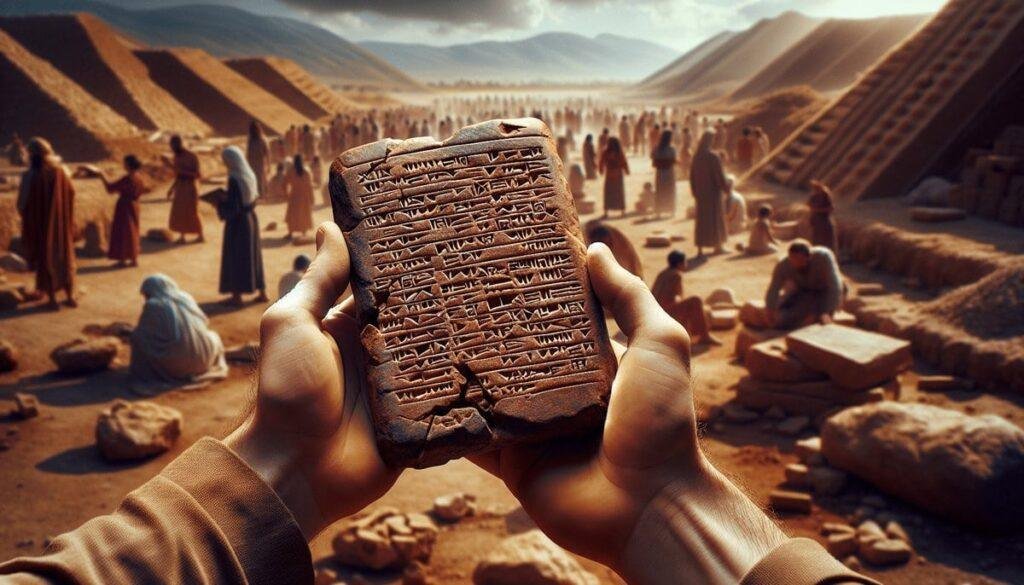Have you ever paused to consider what luxurious artifacts might lay hidden within the ruins of ancient biblical sites? The discipline of Biblical Archaeology offers tantalizing insights into such questions, particularly through the recent discovery of luxury findings in a First Temple Period palace. This significant find has not only added a layer to our understanding of biblical history but has also sparked renewed interest in ancient cultures and traditions as described in sacred scriptures. By examining this recent archaeological breakthrough, we can uncover the historical, religious, and cultural essence conveyed through these magnificent objects, thereby advancing our collective understanding of the biblical era.
Discovery Context
Biblical Reference and Significance
The First Temple, often referred to as Solomon’s Temple, holds a pivotal place within biblical texts. Described vividly in the Book of Kings and Chronicles, it was the spiritual center for ancient Israelites. Understanding artifacts linked to such a site provides a direct connection to the narratives enshrined in biblical scripture.
Historical Background
Constructed in the 10th century BCE, the First Temple became a key religious and political hub until its destruction by the Babylonians in 586 BCE. Its symbolic importance persisted, leaving an enduring legacy that continues to inspire theological debate and scholarly research. The recent archaeological findings stem from excavations at what is believed to be a royal complex from this period—a site connected potentially to the Ophel area, at the southeastern slope of Temple Mount in Jerusalem.
Geographic Location and Recent Findings
This luxurious First Temple Period palace, found at a site marked by Arabah and Ophel excavations, astonished experts with its array of ornate artifacts. Located in what is now modern-day Jerusalem, these digs unearthed items that include intricately carved stone capitals and rare columns. Such revelations confirm that the area hosted an advanced and opulent society, existing during the reign of the kings of ancient Judah.
Archaeological Evidence
Specific Artifacts Unearthed
Excavations of the First Temple Palace site revealed a treasure trove of opulent artifacts. Among the discoveries were fragments of elaborate column capitals adorned with intricate designs. These artifacts often bore evidence of Phoenician influence, underscoring the exchange of art and ideas among ancient Levantine cultures.
Dating Methods
The dating of these artifacts was achieved through meticulous stratigraphy and radiocarbon dating techniques. Through the careful analysis of accompanying pottery shards and organic materials, experts have placed these artifacts between the 9th and 7th centuries BCE. This period is crucial, as it aligns with the biblical timeline of the First Temple era.
Physical Descriptions and Expert Interpretations
These artifacts display an extraordinary level of craftsmanship. The stone capitals, in particular, feature motifs such as proto-Aeolic volutes, a style characteristic of ancient Levantine architecture. According to archaeologists, these features were likely used in constructing grand entryways or as decorative pieces within palatial complexes. Such descriptions align well with biblical accounts detailing the lavishness of Jerusalem’s buildings during this period.
Significance
Biblical Implications and Historical Impact
The uncovering of luxury items in a First Temple Palace context strengthens the authenticity of scriptural descriptions regarding the wealth and opulence of Judean society. The artifacts provide tangible proof that the biblical narrations of Jerusalem’s grandeur were grounded in reality.
Modern Understanding and Research Status
For contemporary scholars, these findings offer a deeper comprehension of ancient cultural practices and inter-regional connections. They shed light on the hierarchical structures of the society that existed in Jerusalem during the biblical era. Current research continues to analyze these pieces, aiming to discern more about the societal and political dynamics of First Temple Jerusalem.
Future Implications
The findings emphasize the potential for further groundbreaking discoveries within the region, urging more comprehensive archaeological efforts. Future excavations might yield additional treasures that enhance our understanding of ancient Jerusalem, reshaping our perception of biblical history.
Conclusion
In summary, the discovery of luxury findings within a First Temple Period palace contributes significantly to our grasp of biblical archaeology. It serves not only as a direct link to the grand narratives of sacred texts but also as a catalyst for future scholarly inquiry. As archaeologists continue to unearth ancient relics, they unravel chapters of history that are as gilded as the artifacts themselves, offering insights into the bygone eras of biblical lore. In light of these discoveries, we invite you to ponder: What other hidden treasures and stories might still lie beneath the surface, waiting to enrich our understanding of the past? Your curiosity and engagement with these archaeological endeavors could help further illuminate the mysteries of ancient history.





